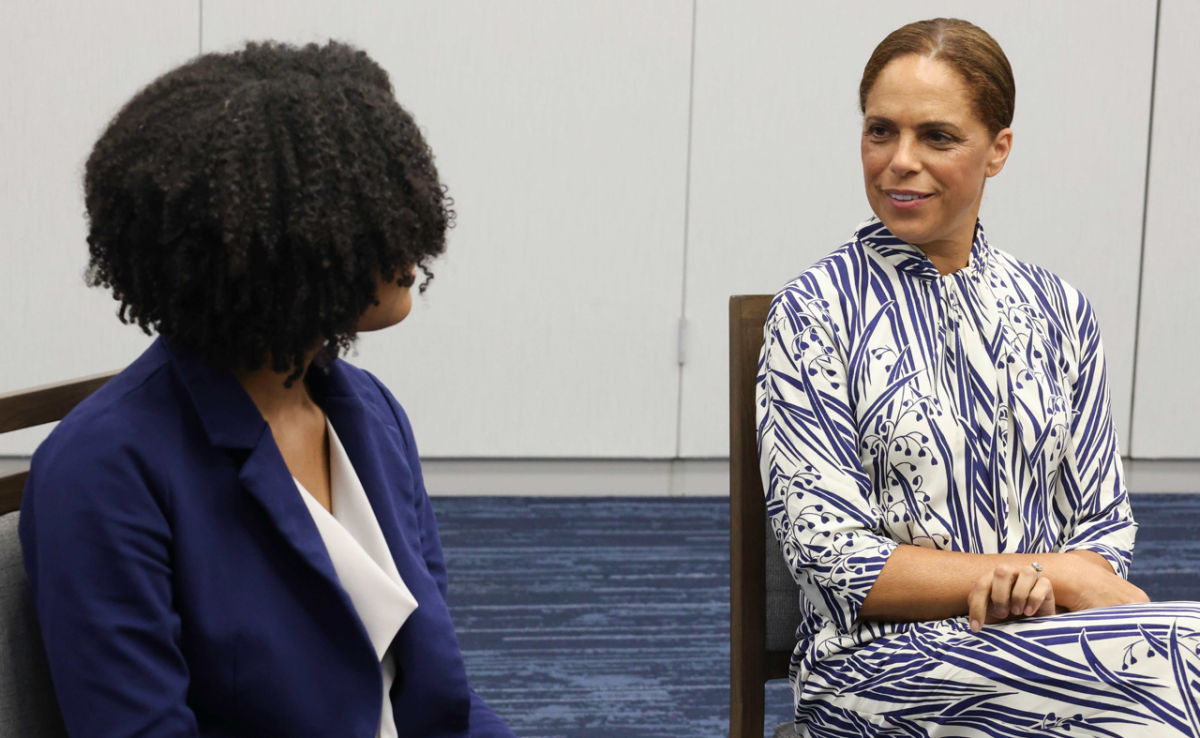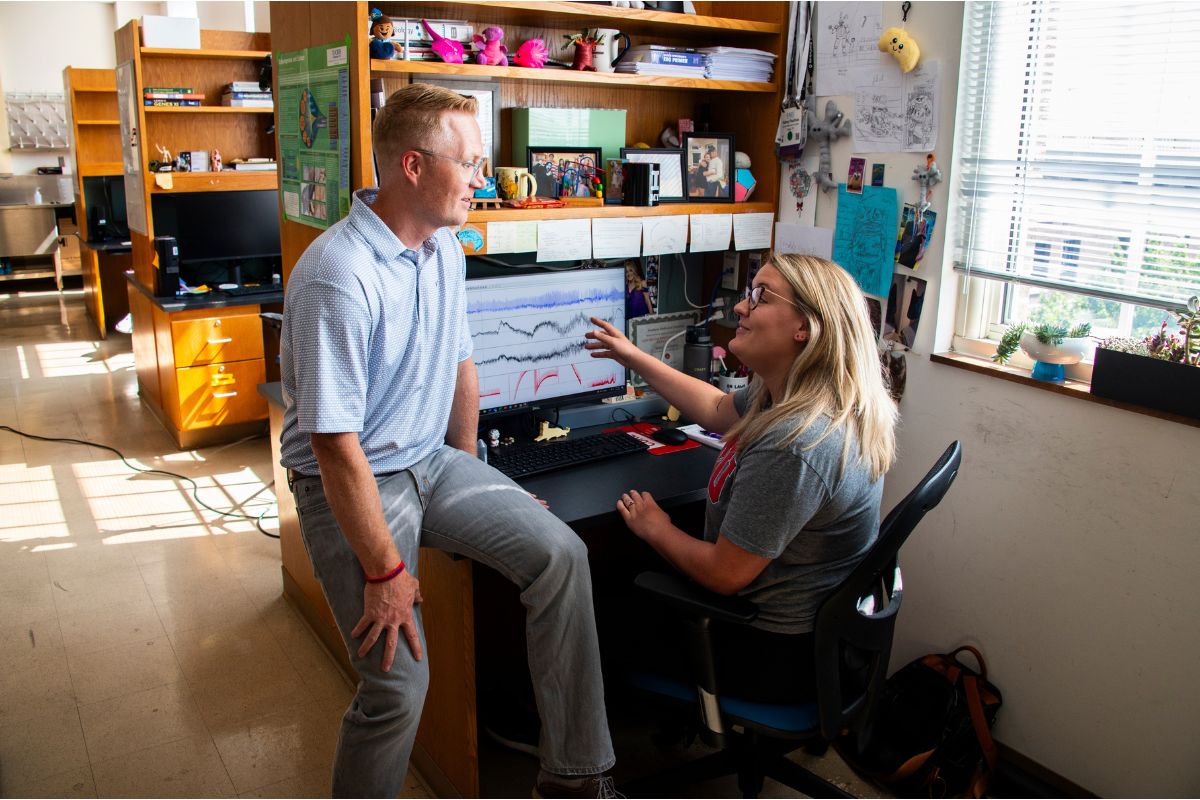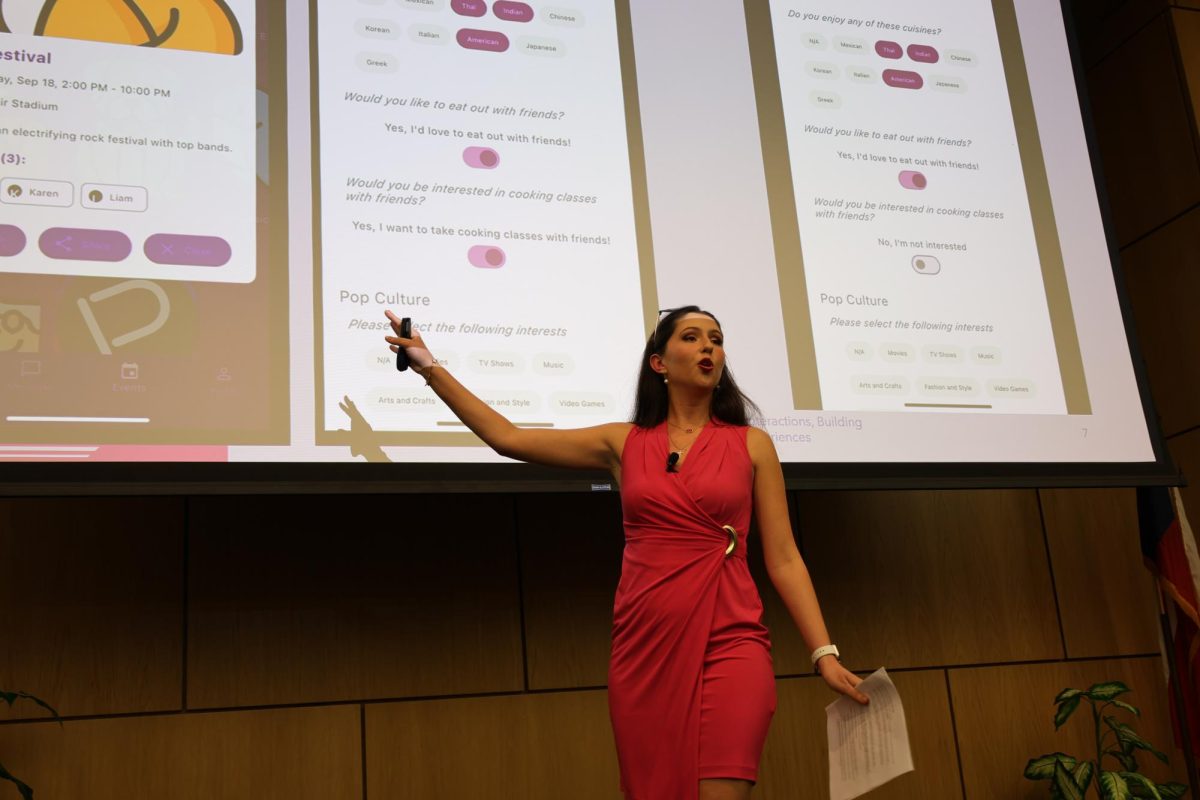Katelyn Hall is one of a shrinking number of certified bilingual teachers in the Texas public school system. Like many bilingual kindergarten teachers, Hall spends a large portion of her time lesson-planning. In addition to teaching English and Spanish, Hall finds ways to creatively integrate various cultures into a coherent classroom, affirm her students’ experiences and expose them to cultures different from their own.
“It’s challenging but extremely important to recognize the multitude of cultures in a room,” Hall said. “I had students from Mexico, Honduras, Puerto Rico, El Salvador and the U.S. in one class.”
Nearly 52 percent of public school students in Texas are categorized as Hispanic. The Office of the State Demographer predicts a similar statistic in the state population as soon as 2020. The first official State Demographer of Texas, Steve Murdock, predicts in his book “Changing Texas: Implications of Addressing or Ignoring the Texas Challenge” that Texas will not fare particularly well as the Hispanic population increases.
It’s a matter of education. According to Murdock and other economic analysts, the biggest indicator is a largely uneducated Hispanic population that continues to grow.
SMU economics professor and applied econometrician Tom Fomby studies demographic shifts and their effects on the economy.
“There is a lot of logic to it,” Fomby said. “If you look at Hispanics and their average income versus non-Hispanics, the non-Hispanics side tends to be higher in terms of average income. So, as the number of individuals that fall into this lower bucket increases, it’s likely going to give rise to greater inequality.”
Many Hispanic students are children of immigrants, so English is often not the primary language spoken in their homes. This language barrier makes it especially difficult for these students to succeed in classrooms where courses are taught completely in English, often resulting in high retention and dropout rates for Hispanic students.
SMU political expert and current professor of political science at Cal Jillson is an expert on the subject who studies the shifting Texas demographics.
“The large population of Hispanic youth currently in the Texas school system will soon become the bulk of Texas’s workforce,” Jillson said.
Jillson stresses the changes that need to be made to the education system to increase educational opportunities for the Hispanic population.
“Low levels of education directly correlate to low levels of income,” Jillson said. “A cycle of poverty seems inevitable for many Hispanic children who grow up in poor homes, drop out of school and have children who will repeat the pattern.”
Texas is a particularly concerning case. Statistics show a consistent increase in students who receive bilingual help through an English as a Second Language (ESL) program. In the past decade, ESL involvement has increased from 14.4 percent to 17.8 percent. Recent data published by the Texas Education Agency reveals that Hispanic students participating in ESL or another bilingual learning program constitute a high percentage of the dropout rates in 2016.
Students who struggle in the classroom and repeat the same grade multiple times during their schooling years are at a higher risk of dropping out of school before getting a high school diploma. Retention rate data shows 2.3 percent of students characterized as bilingual, 3.6 percent of English-language learners and 4.1 percent of students in an ESL program. Each year a student is retained, truancy becomes less of a threat and the student is at greater risk of dropping out once he or she turns 18 years old.
Professor Doris Baker, chair of the Master in Bilingual Education at SMU’s Simmons School of Education and Human Development, worries about the dropout rate for Hispanic students.
“Dropouts for Hispanic students are very high, one of the highest. But also their academic performance is one of the lowest in the country, not in all the sections, but mostly,” Baker said. “Another concern is that a lot of them live in poverty. This is one reason why bilingual instruction has really positive effects even beyond the mere academic sense. They also maintain a second language, which makes them very marketable.”
ESL and other bilingual learning programs are intended to keep Hispanic students in Texas schools by providing the necessary assistance to succeed in an English classroom. However, these programs require a multitude of highly motivated bilingual teachers who have passed rigorous testing. Major supply and demand issues exist because of a diminishing number of certified bilingual instructors and a growing student population in need of bilingual education.
St. Edward’s University assistant profess of education Arcelia Hernandez reported to the Texas Tribune that bilingual and ESL/ELL teachers spend more time teaching, have heavier workloads and must complete a rigorous certification process. None of this is reflected in their pay.
“One of the most difficult parts of teaching bilingual kindergarten is the specific content knowledge,” Hall said. “Teaching a child how to read in Spanish and English are [sic] entirely different in many ways. Bilingual kindergarten requires a lot of specific training and knowledge about Spanish phonics and early literacy development.”
If the number of certified instructors in bilingual learning continues to decline, data demonstrates it will become nearly impossible for students to break language barriers and succeed in the classroom. The Texas Tribune’s Texas Public Schools Explorer indicates that school districts have budgeted for a smaller workforce of full-time employees certified in teaching English as a second language. At SMU, Baker is one of many professors encouraging the general population to complete the intensive certification process and pursue a Master’s degree in bilingual education.
“We are going to need more certified bilingual teachers… the Hispanic population is very young.” Baker said. “Along with decreased funding, we just don’t have bilingual teachers, which is ironic since nearly 50 percent of the population in Texas is Hispanic. Schools are having to bring teachers in from other countries like Mexico and Spain. The bilingual certification exams are very grammar-focused, so you do have to have strong grammar knowledge in the language. But on the other hand, you can easily get a job because it’s in such high demand.”
With Hispanic students accounting for over half of the number of Texas students in the public school system, effective bilingual learning programs are extremely relevant in the Lone Star State. Educators are working to amend bilingual programs in ways that will hopefully lead to ESL/ELL students becoming proficient in English earlier in their educational journey. Current programs for bilingual kindergarten are meant to establish the academic language foundation in Spanish before transitioning to formal English instruction.
“I personally prefer a model that introduces English literacy as foundational more immediately following Spanish because students are asked to comprehend so much that is English-dependent during their math instruction,” Hall said. “If a kindergarten student has to read English in his end of year math assessment, we should also be equipping that student with decoding and phonics skills to decipher that math text.”
Baker agrees.
“In Texas, there is an underrepresentation of Hispanic students struggling in school,” Baker said. “There are a lot of students that struggle with reading in the early grades but do not receive the bilingual services. Then you find these students in fourth and fifth grade when it’s much more complicated to help them.”
Conversations debating where to place responsibility for the success of bilingual learning programs can complicate who is held accountable for improving educational opportunities for Hispanic children in Texas. Are the legislators who should be pushing for educational reforms and creating programs such as ELL and ESL to blame? While politics play a major role in programs and funding for English language learners, bilingual teachers are essentially left with the responsibility of executing the programs successfully by paying equal attention to English and the student’s primary language.
“We must really pay attention in the early grades to how these Hispanic students are doing and find them as much support as possible.” Baker said. “We know that preventing reading difficulties is better, and in the long-term, cheaper than waiting for students to fail and then provide these services. We must also make a conscious effort to prepare high-quality bilingual teachers.”
Hillary Dunklin is a first-year fifth-grade reading and writing teacher at RISD academy in the Richardson school district. Eighty-seven of her 90 students qualify as English language learners. But she teaches in a completely English classroom where students who come from homes where English is not the primary language spoken are expected to keep up.
“I think the biggest thing is finding out where these students gaps are in their education. Once you can target that and help them catch up, then you are helping them develop a solid foundation,” Dunklin said. “I think that’s the most rewarding part. Once you can help them find with their glitch is, you can help them close the gap.”
These Hispanic students are vital to Texas’s future. They can’t get lost in a broken system.
“The Hispanic students, in my personal experience at least, tend to be more reticent in class for whatever reason,” Fomby said. “They’re just as smart… the intelligence black, white, red, green, it’s all there. It’s just a matter of embellishing it and bringing it out in students.”









